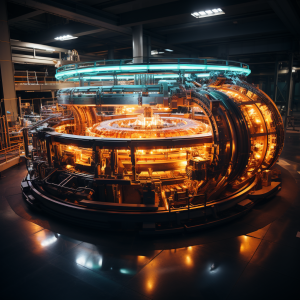
What is the theory of relativity, and who developed it?
The theory of relativity is a fundamental framework in modern physics that was developed by Albert Einstein in the early 20th century. It consists of two parts: the special theory of relativity (1905) and the general theory of relativity (1915). These theories revolutionized our understanding of space, time, and gravity, providing a more accurate and comprehensive description of the universe at large scales and high velocities than classical mechanics.
Special Theory of Relativity
The special theory of relativity, often referred to simply as special relativity, deals with objects and observers moving at constant velocities relative to each other, particularly when these velocities are close to the speed of light. It was developed by Einstein to reconcile the apparent inconsistencies between classical mechanics and Maxwell’s equations of electromagnetism.
The central postulates of special relativity are:
The Principle of Relativity:
The laws of physics are the same for all observers in inertial (non-accelerating) frames of reference. No inertial frame of reference is preferred over another, and it is impossible to determine an object’s absolute motion or rest.
The Constancy of the Speed of Light
The speed of light in a vacuum (approximately 299,792 kilometers per second) is the same for all observers, regardless of their relative motion or the motion of the light source. This is a fundamental constant of nature that cannot be exceeded by any object with mass.
Special relativity has several profound consequences that are at odds with our everyday experience and intuition:
Time Dilation:
Moving clocks run slower than stationary clocks. As an object’s velocity approaches the speed of light, time appears to slow down for that object relative to a stationary observer. This effect has been experimentally confirmed using atomic clocks in fast-moving aircraft and orbiting satellites.
Length Contraction
Moving objects contract in the direction of motion. An object’s length, as measured by a stationary observer, decreases as its velocity increases, reaching zero when the object’s velocity approaches the speed of light.
Mass-Energy Equivalence
Energy and mass are interchangeable, and they are related by the famous equation E = mc², where E is energy, m is mass, and c is the speed of light. This principle is the basis for the enormous energy release in nuclear reactions, where a small amount of mass is converted into a large amount of energy.
Relativity of Simultaneity
The order of events can depend on the observer’s motion. Two events that appear simultaneous to one observer may not be simultaneous to another observer moving relative to the first.
General Theory of Relativity
The general theory of relativity is a more comprehensive framework that extends special relativity to include accelerating frames of reference and describes the force of gravity. Einstein developed the general theory of relativity to reconcile the principles of special relativity with Newton’s law of universal gravitation. The central idea of general relativity is the equivalence principle, which states that the effects of gravity are indistinguishable from the effects of acceleration. In other words, there is no experiment that can differentiate between a gravitational field and an equivalently accelerating frame of reference.
General relativity reinterprets gravity as a curvature of spacetime caused by the presence of mass and energy. Massive objects warp spacetime, causing nearby objects to follow curved paths, which we perceive as gravity. The mathematical formalism of general relativity is based on the Einstein field equations, a set of ten interrelated equations that describe the relationship between the distribution of mass and energy in the universe and the geometry of spacetime.
General relativity has several remarkable consequences and predictions, many of which have been experimentally confirmed:
Gravitational Time Dilation
Time flows more slowly in stronger gravitational fields. This effect, which is an extension of time dilation in special relativity, has been confirmed through experiments with atomic clocks placed at different altitudes.
Gravitational Redshift
Light or other electromagnetic radiation emitted from a massive object (such as a star) experiences a shift in frequency as it climbs out of the object’s gravitational field. This redshift, which causes the radiation to appear redder, has been observed in experiments and is a direct consequence of gravitational time dilation.
Bending of Light
Light rays passing near a massive object are deflected due to the curvature of spacetime, causing the apparent position of distant objects (such as stars) to shift when observed near the massive object. This phenomenon, called gravitational lensing, was first observed during the 1919 solar eclipse and provided one of the earliest confirmations of general relativity.
Gravitational Waves
Accelerating masses produce ripples in spacetime that propagate at the speed of light, similar to the way a disturbance in a pond creates waves that travel across the water. These gravitational waves were first detected in 2015 by the LIGO observatory, a century after Einstein predicted their existence.
Black Holes
General relativity predicts the existence of black holes, regions of spacetime where gravity is so strong that nothing, not even light, can escape. Black holes have been indirectly observed through their gravitational effects on nearby objects and the detection of gravitational waves from merging black holes.
Expansion of the Universe
General relativity provides a framework for understanding the large-scale structure and evolution of the universe, including its expansion. Observations of distant galaxies have confirmed that the universe is expanding, a discovery that led to the development of the Big Bang theory and modern cosmology.
The theory of relativity, both special and general, has had a profound impact on our understanding of the universe, from the behavior of subatomic particles to the large-scale structure and evolution of the cosmos. Despite being over a century old, relativity remains a cornerstone of modern physics and continues to provide insights into the fundamental nature of space, time, and gravity.




